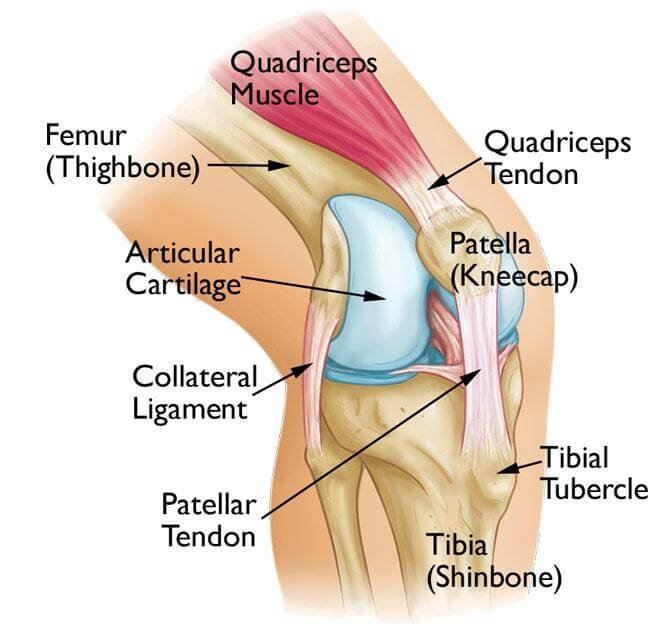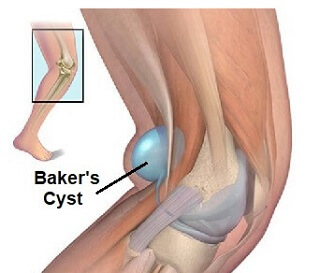Knee pain is an ailment that affects millions of individuals around the world, spanning across various age groups and backgrounds. Whether it’s caused by an injury, chronic conditions like arthritis, or even overuse, finding effective ways to manage and alleviate knee pain is a common concern. In the pursuit of relief, one age-old remedy often comes into play: the application of ice. For decades, using ice has been the go-to solution for many seeking respite from knee pain, but there’s growing evidence that suggests this practice may not always yield the desired results.

In our quest to understand the intricacies of knee pain management, we delve deep into the question: “Does using ice make knee pain worse?” This article aims to unravel the long-held myths and misconceptions surrounding the application of ice to knee pain, providing you with a well-informed perspective on its efficacy.
The belief that icing the knee is a universally beneficial approach may stem from its ability to temporarily numb the area and reduce inflammation. However, the science behind ice’s impact on knee pain is far more nuanced than many realize. In this comprehensive exploration, we’ll uncover seven common misconceptions about the use of ice and present evidence-based solutions to empower you in making informed decisions about managing your knee pain.
As we navigate this topic, we’ll touch on various aspects, including the potential drawbacks of over-reliance on ice, alternative and complementary methods for pain management, and how to tailor your approach to knee pain depending on its underlying cause. By the time you’ve read through these pages, you’ll have a clearer understanding of whether ice exacerbates knee pain, when to use it, and when to explore other avenues for relief.
So, if you’ve ever wondered whether using ice makes knee pain worse or sought to demystify the age-old remedy, join us on this journey as we sift through the facts, dispel the myths, and equip you with the knowledge you need to make the best decisions for your knee health.
Debunking Misconceptions about Icing Knee Pain:
- Myth: Ice is a Universal Solution: One of the most common misconceptions is that ice is a panacea for all knee pain. In reality, the effectiveness of ice can vary depending on the underlying cause of the pain. While it may provide relief for acute injuries by reducing inflammation and numbing the area, it might not be as effective for chronic conditions like osteoarthritis. Solutions vary based on the specific nature of your knee pain.
- Misconception: Ice Speeds Up Healing: Many believe that icing promotes faster healing, but research suggests that it can actually slow down the body’s natural healing processes by constricting blood vessels. Understanding when to ice and when to avoid it is crucial to promote optimal recovery.
- Myth: Ice is Harmless: While ice is generally safe, improper use can lead to skin damage or frostbite. Knowing the right way to apply ice, such as using a cloth barrier and adhering to recommended time limits, can help prevent potential side effects.
- Misconception: Ice Replaces Professional Care: Some individuals rely solely on ice for knee pain, neglecting professional medical advice. It’s essential to consult with a healthcare provider to determine the root cause of your knee pain and to create a comprehensive treatment plan.
Alternative Approaches and Solutions:
- Heat Therapy: For chronic knee pain, heat therapy may be more effective than ice. Heat can relax muscles, improve blood flow, and alleviate pain in conditions like osteoarthritis. Learning when to apply heat and when to use ice is key to maximizing your pain relief.
- Physical Therapy: Incorporating targeted exercises and physical therapy into your routine can help strengthen the muscles around the knee, improve joint mobility, and provide long-term relief for various knee conditions.
- Medications and Injections: In some cases, medication or injections recommended by a healthcare professional can effectively manage knee pain. These options may address the root cause of the pain, reducing the need for symptomatic relief like ice.
Tailoring Your Approach:
Understanding your specific circumstances is vital when managing knee pain. Recognizing the difference between acute and chronic pain, identifying the cause, and consulting with healthcare professionals are all crucial steps in developing a personalized approach to knee pain management. Whether it’s a sports injury, osteoarthritis, or another underlying condition, tailoring your strategy will provide more targeted and effective relief.
In conclusion, the question of whether using ice makes knee pain worse is far from a simple ‘yes’ or ‘no’ answer. The effectiveness of ice in managing knee pain depends on various factors, and its application should be based on the specific nature of the pain and individual needs. It’s essential to be informed and discerning when deciding on the most suitable pain management methods.
This article will delve deeper into each of the misconceptions, offering solutions and recommendations to help you make the best choices for your knee health. Remember that the key to effective pain management is a combination of knowledge, consultation with healthcare professionals, and a customized approach that aligns with your unique circumstances. Stay tuned as we explore each of these facets in greater detail, guiding you toward a more informed and empowered stance in managing your knee pain.
Understanding the Science Behind Ice and Knee Pain:
To fully grasp the nuances of ice’s impact on knee pain, it’s essential to explore the science behind it. Ice, when applied to an injured or inflamed area, can temporarily reduce pain and swelling. This is achieved by constricting blood vessels, thereby slowing down the circulation of blood to the affected area. The reduced blood flow can help mitigate inflammation and numb the pain receptors, offering a degree of relief. However, it’s crucial to recognize that these effects are temporary and may not address the root cause of the pain.
For acute injuries, such as a recent knee sprain or strain, icing can be an effective initial treatment. It can help minimize immediate swelling and provide short-term pain relief. But for chronic conditions like osteoarthritis, where inflammation is often less prominent, the benefits of ice may be limited.
Debunking the “RICE” Approach:
The widely known “RICE” protocol (Rest, Ice, Compression, Elevation) has been a go-to strategy for injury management, including knee pain. While this method can be beneficial for some acute injuries, it is not a one-size-fits-all solution. In fact, recent studies and medical consensus have begun to shift away from the routine application of ice for every injury. Experts now suggest that the RICE approach should be carefully considered based on the type of injury, its severity, and the individual’s unique needs.
When to Ice and When to Seek Alternatives:
- Acute Injuries: Ice is most effective for acute injuries like sprains, strains, or contusions, especially during the first 48 hours. Applying ice for 15-20 minutes every 1-2 hours can help reduce initial inflammation and alleviate pain. However, it should be followed by appropriate rest, compression, and elevation.
- Chronic Conditions: For chronic knee pain due to conditions like osteoarthritis or tendinitis, heat therapy and physical therapy may offer more significant and lasting relief. Heat can relax tight muscles, improve joint flexibility, and soothe chronic discomfort.
- Consult a Healthcare Provider: If you’re uncertain about the cause of your knee pain or how to manage it effectively, it’s advisable to seek professional guidance. Healthcare providers can offer a diagnosis and recommend the most appropriate treatment plan, which may include medications, injections, or physical therapy.
Conclusion:
In the pursuit of effective knee pain management, it’s essential to move beyond conventional wisdom and embrace a more nuanced perspective. The idea that using ice makes knee pain worse is not a definitive statement; instead, it’s about understanding when and how to use ice judiciously. Ice can be a valuable tool for specific situations, but it may not be the ultimate solution for all knee pain. By debunking the myths, exploring alternatives, and tailoring your approach, you can take a more informed and comprehensive stance in managing your knee pain.
Remember that every individual’s experience with knee pain is unique, and what works best for one may not work for another. Therefore, a personalized approach that considers the nature of the pain, its underlying cause, and expert advice is crucial to achieving long-term relief and better knee health. Stay informed, stay open to various methods, and prioritize your well-being on your journey to healthier knees.




